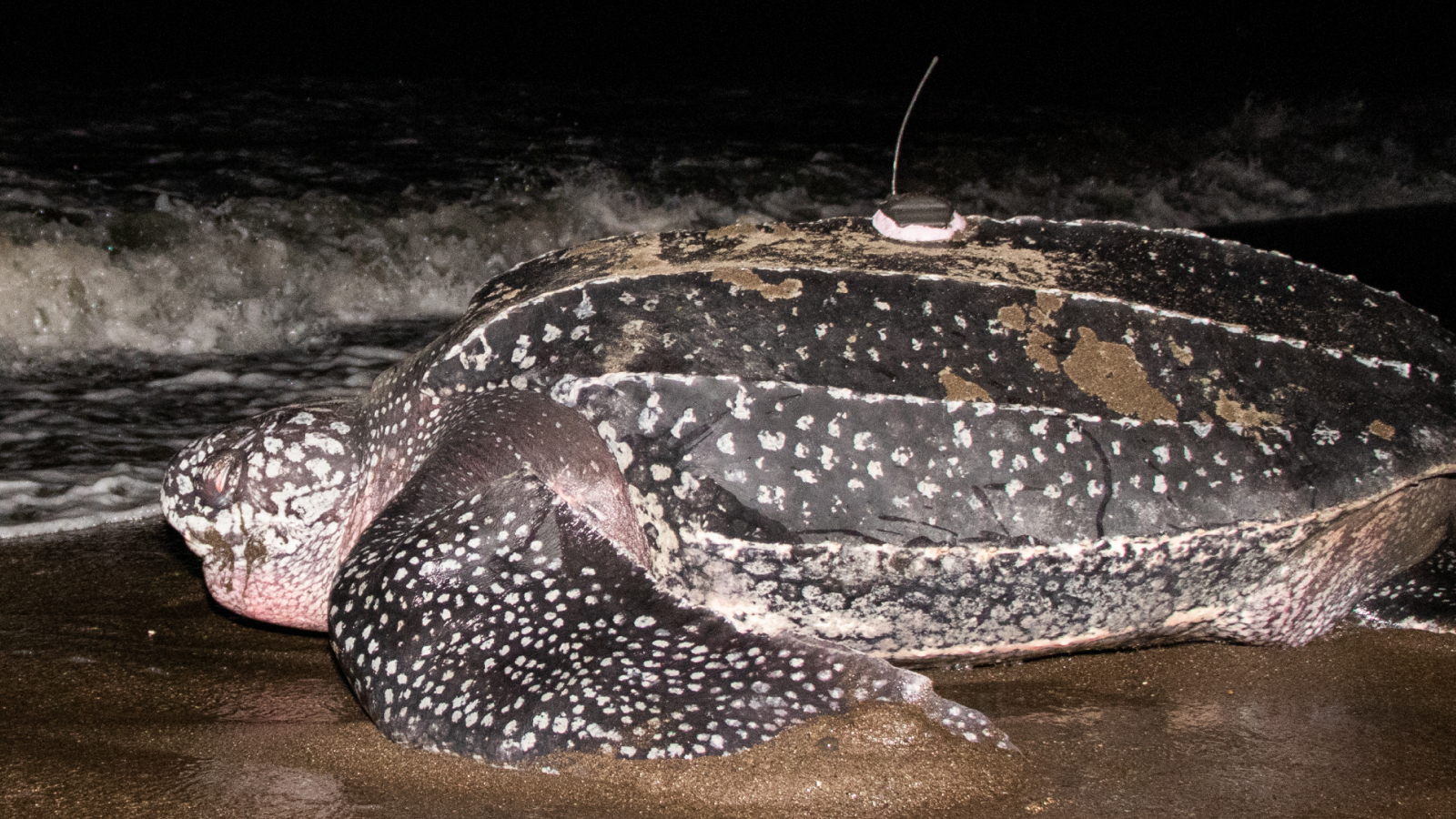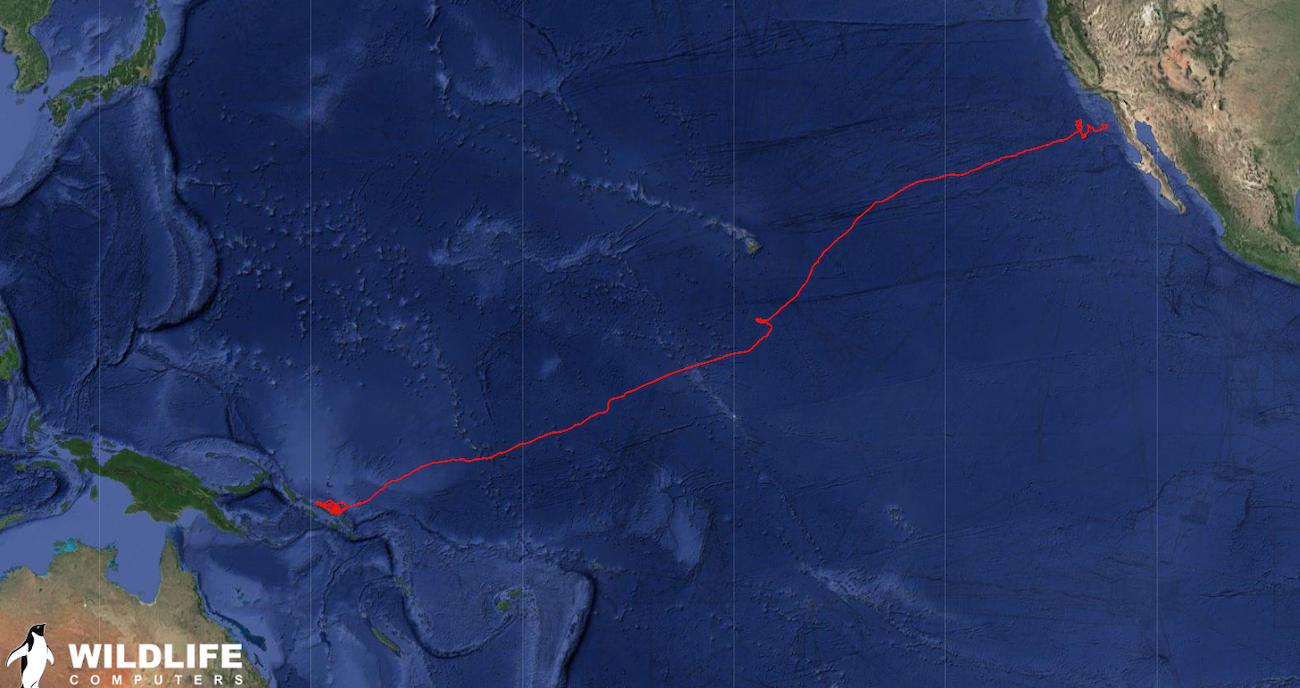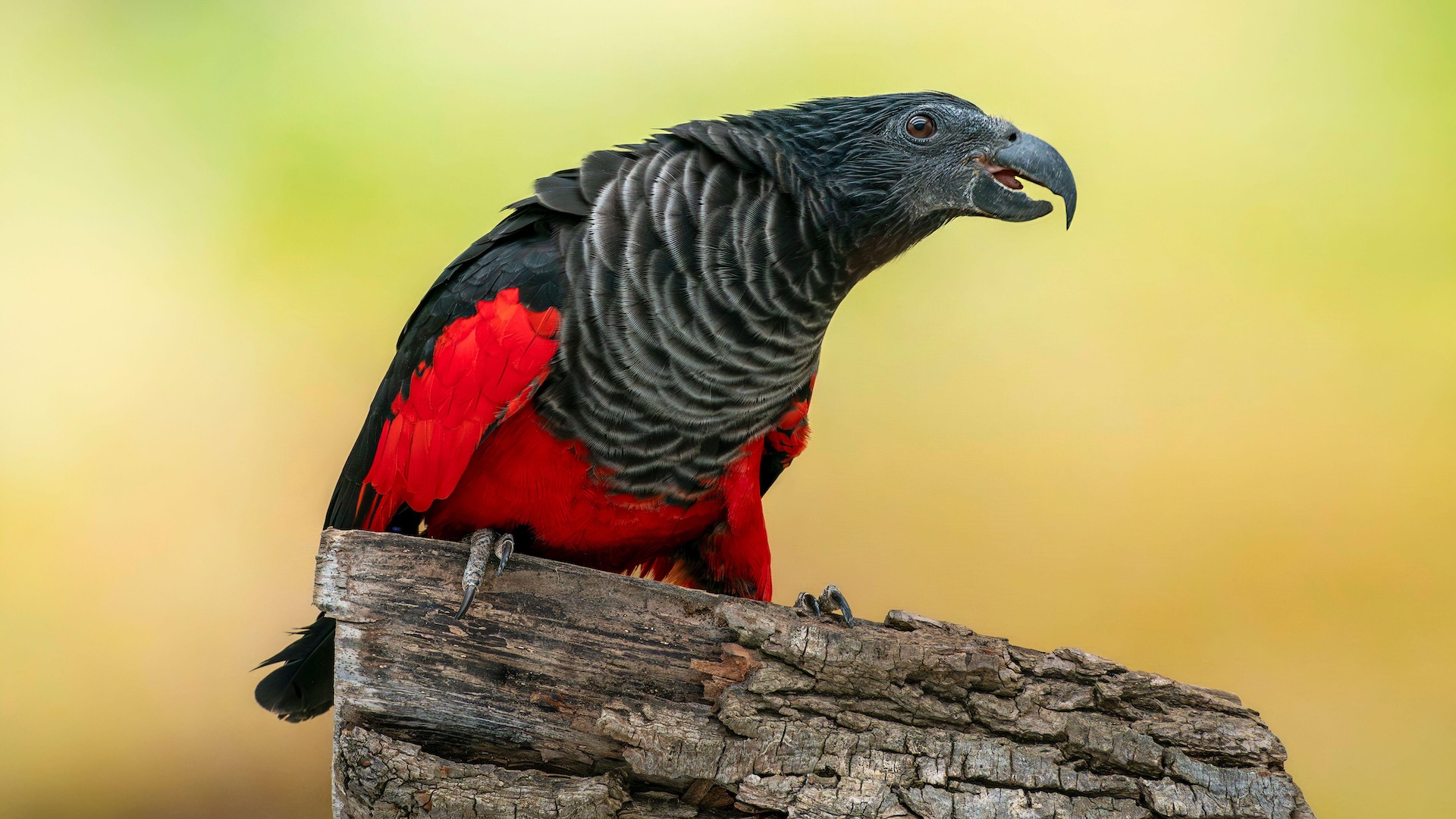Leatherback turtle dives deeper than a Navy sub, smashing world record in the process
A Western Pacific leatherback migrating from her nesting grounds in the Solomon Islands dove to a whopping 4,409 feet, conservationists say.

Earlier this year, the Western Pacific leatherback (Dermochelys coriacea) left a nesting site in the Solomon Islands and dove 4,409 feet (1,344 meters) beneath the ocean surface, according to the environmental organization The Nature Conservancy.
At that depth, the leatherback swam deeper than the current Guinness World Record for the deepest turtle dive — 4,199 feet (1,280 m) — set by another leatherback, the deepest-diving reptile species. For context, Navy submarines have reportedly gone to depths of around 2,950 feet (900 m), while the deepest human scuba dive was 1,090 feet (332 m).
Researchers recorded the dive as part of an ongoing and as-yet-unpublished satellite tracking study to help protect leatherbacks. Another of their tagged turtles swam across the entire Pacific Ocean. Peter Waldie, a marine scientist who leads The Nature Conservancy’s Solomon Islands Program, described the deep dive and epic migration as "truly spectacular."
"Leatherbacks are just an incredible creature to have in the world," Waldie told Live Science. "The ability to swim non-stop all the way across the Pacific, to dive as deep as a Navy submarine on a single breath, it absolutely blows my mind."
Related: What is the deepest-diving mammal?
Live Science approached Guinness World Records about the new claim for the deepest reptile dive. A spokesperson for the company said that the deepest dive by a turtle is one of their "consultant records," which they work with specialist experts to verify — usually after a scientific publication.
"For data-driven science and nature records such as this case, we would generally wait for the findings to be reviewed and published in a peer-reviewed journal before we consider it," the spokesperson said.
Sign up for the Live Science daily newsletter now
Get the world’s most fascinating discoveries delivered straight to your inbox.

Leatherbacks have evolved a variety of adaptations for their deep dives. Even though they're air breathers like us, leatherbacks can hold their breath for much longer and stay underwater for around 90 minutes at a time. Their specialized carapace (upper shell) also contracts and expands with pressure changes to help them survive the deadly pressures of the deep.
Scientists have a few theories as to why leatherbacks dive so deep, but tracking research has indicated they are swimming down to eat jellyfish, which move up and down the water column, Waldie said
Leatherbacks spend most of their lives out at sea, but females briefly come onto shore to lay their eggs. The Solomon Islands' nesting leatherbacks are part of the critically endangered Western Pacific population, comprising an estimated 1,400 breeding adults, according to the Nature Conservancy.
"We have reached a point in conservation where we cannot afford to lose any of these creatures," Waldie said. "Every single breeding adult is vital, and every nest we can save that protects the next generation is vital."
Since 2022, Waldie and his colleagues have tagged 17 leatherbacks nesting in Isabel Province on the Solomon Islands, where The Nature Conservancy's local community rangers protect sea turtles and their eggs from poaching and predators.
The record-breaking leatherback laid her eggs at the Sasakolo nesting beach. Staff named her "Uke Sasakolo," meaning "from Sasakolo." She broke the current depth record on March 25, not long after leaving the nesting grounds, according to Waldie.
Uke Sasakolo nested during the peak Solomon Islands nesting season, which occurs between November and January. The tagged leatherbacks tended to then migrate south into southern Australian and New Zealand waters, according to Waldie. But one nester that arrived in June headed east.
"Aunty June," as she was named, went straight across the Pacific and ended up in feeding grounds just off the coast of Baja California in Mexico. Waldie hopes further research will confirm whether mid-year nesters like Aunty June commonly take this eastern migration route, while peak season nesters like Uke Sasakolo head south.
"We call them all the Western Pacific nesters, but we might find that these nesting subpopulations are heading to completely different foraging areas," he said.

Patrick Pester is the trending news writer at Live Science. His work has appeared on other science websites, such as BBC Science Focus and Scientific American. Patrick retrained as a journalist after spending his early career working in zoos and wildlife conservation. He was awarded the Master's Excellence Scholarship to study at Cardiff University where he completed a master's degree in international journalism. He also has a second master's degree in biodiversity, evolution and conservation in action from Middlesex University London. When he isn't writing news, Patrick investigates the sale of human remains.










